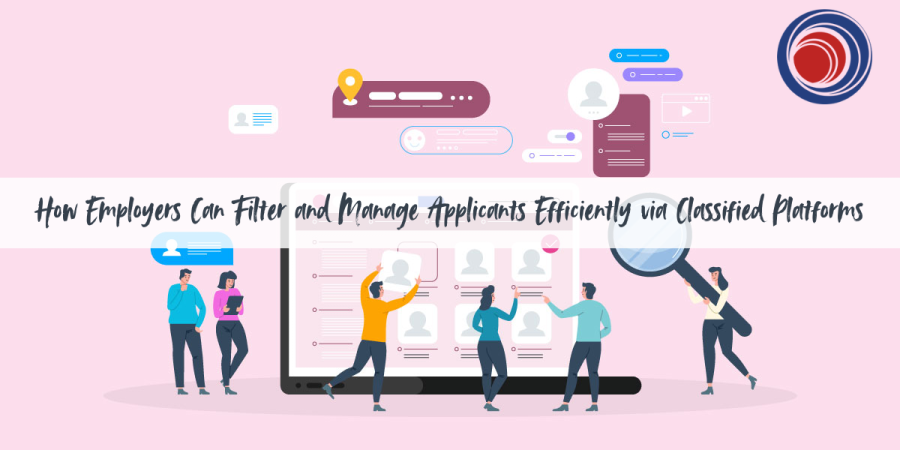Hiring through classified ad platforms can be a powerful way for employers to reach a wide pool of candidates—from local talent to experienced professionals. But posting a job is just the first step. To make the process efficient, you need a smart system for filtering and managing applicants. Here’s a practical guide to help you do that.
1. Define Clear Eligibility Criteria
Start by clarifying exactly what you need: required skills, experience, education, language fluency, and possibly location or remote-work ability. When you clearly define these criteria in your ad, you help weed out candidates who clearly don’t match, saving time and effort. Indeed, one of the best ways to manage applicant quality is to set “required” and “preferred” qualifications right up front.
Using screening questions (for example, “Do you have 3+ years of experience?” or “Are you legally authorized to work in this country?”) in your job post on the classified platform can filter out unqualified applicants early.
2. Use Applicant Tracking and Management Tools
Even on classified ad platforms, managing a large number of applicants gets messy without a system. That’s where an Applicant Tracking System (ATS) or a simple recruitment management tool comes in. An ATS simplifies things by storing applications, parsing resumes, automating communication, tagging candidates, and filtering based on keywords or required qualifications.
Choose a system that integrates with your classifieds or job-board platform, or export applications manually into your ATS. It helps you track who’s in which stage—applied, under review, shortlisted, or rejected—and ensures no candidate slips through the cracks.
3. Add Screening Questions to Your Posts
Many job platforms allow you to include pre-screening questions directly in your ad. Use these to ask about key must-haves related to the role. This lets you quickly filter out applicants who don’t meet the basic requirements.
When applicants answer these questions, you can automatically reject or shortlist them based on their responses—saving you from reading through every resume manually.
4. Leverage Advanced Filters and Keywords
When you receive responses, make use of your ATS or the platform’s in-built filters. Filter candidates by years of experience, education level, certifications, and location. For example, some job platforms let you search by keywords or tags so you can quickly isolate those who meet your essential criteria. LinkedIn
This way, rather than getting overwhelmed by a large applicant pool, you can focus only on the profiles that are most relevant.
5. Vet Candidates with Online Screening
Beyond resumes, you can gather more insight into your applicants through online vetting. Checking a candidate’s professional social media presence, public portfolio, or LinkedIn profile can help you assess cultural fit and legitimacy.
At the same time, keep the process fair and compliant: follow regulations and avoid discrimination (for example, don’t make hiring decisions based on protected characteristics).
6. Communicate Efficiently and Promptly
Once candidates are filtered, it’s very important to maintain good communication. Use templated emails or messages (via your ATS if possible) to acknowledge receipt, update status (shortlisted or not), and provide next steps. According to research, platforms that make it easy for employers to respond to candidates—and encourage them to do so—improve both the candidate experience and employer brand.
Good communication keeps applicants engaged and builds your reputation as an employer who values respect and transparency.
7. Use Talent Pools for Future Hiring
Even those who don’t make the cut now might be a good fit later. Consider building a talent community or candidate pool within your ATS.
When new roles come up, you can quickly reach out to qualified past applicants, which saves time and reduces cost on future hiring campaigns.
8. Review, Refine, and Optimize
After every hiring cycle, take a moment to review what worked and what didn’t. Which screening questions filtered out too aggressively? Did any qualified candidates get eliminated early? Did you risk missing good talent?
Use these insights to adjust your criteria, messages, or processes. As hiring volume changes, refine your filters and ask new pre-screening questions to stay efficient.
9. Automate Where Possible
Automated tools like chatbots or automatic email sequences can help move candidates quickly through early stages. These tools can respond to FAQs, share basic information about the role, or schedule interviews.
Automation helps reduce the manual burden and ensures no applicant is left hanging.
10. Maintain Compliance and Fairness
When filtering applicants, ensure you’re following all applicable employment laws. Avoid making decisions based on protected traits like age, gender, religion, or nationality.
Be consistent in how you evaluate candidates: use the same filters, scoring, and process for every applicant. This makes your hiring not just efficient, but also fair and defensible.
Why Efficient Filtering on Classified Platforms Matters
Classified platforms can flood you with applications—and not all of them will be a good fit. By defining clear criteria, using smart tools, and building a process that combines automated filters with human judgment, you make your hiring smarter, faster, and fairer. This not only helps you select the right candidates, but also builds a positive reputation for your organization—one that encourages stronger applicants in future hiring cycles.

